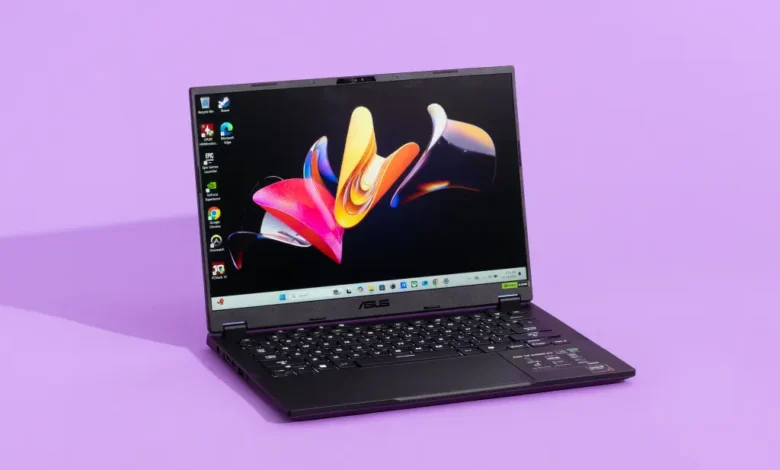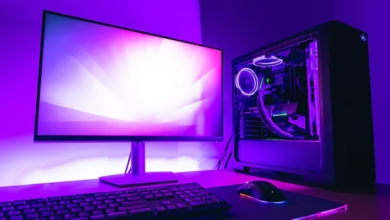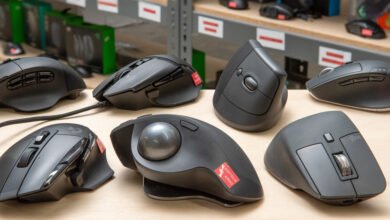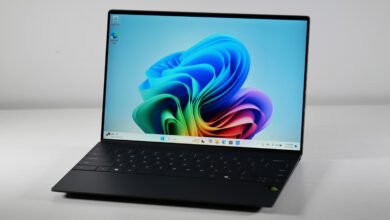The Complete Guide to Laptops: Everything You Need to Know Before You Buy or Upgrade

Why Laptops Are More Relevant Than Ever
Laptops have come a long way from being just portable versions of desktop computers. Today, they are powerful, sleek, and capable of handling everything from work tasks and creative projects to gaming and entertainment. In a world that demands mobility without compromising performance, laptops have solidified their position as the go-to device for students, professionals, and casual users alike.
With the rise of remote work, online learning, and digital nomad lifestyles, the need for a reliable laptop has skyrocketed. People now look for devices that can be carried anywhere while still delivering the speed, battery life, and features they need. Whether you’re editing high-resolution videos, participating in virtual meetings, or binge-watching your favorite shows, your laptop is now your central hub.
But here’s the thing — not all laptops are created equal. Choosing the right one depends on understanding your needs, knowing what specifications to look for, and avoiding the common traps of flashy marketing. In this article, we’ll dive deep into everything you need to know about laptops, from their types and features to tips on making the perfect purchase.
1. The Evolution of Laptops

Laptops weren’t always as sleek and capable as they are today. Back in the 1980s and 1990s, laptops were bulky, heavy, and often struggled to match the performance of desktop computers. They were seen as business tools rather than personal devices for everyday use. Fast forward to the present day, and the scenario has completely changed.
Advancements in processor technology, battery efficiency, and display quality have transformed laptops into versatile powerhouses. Modern devices are thinner, lighter, and more energy-efficient, making them just as capable as high-end desktop machines in many cases. With the introduction of SSDs (Solid State Drives) and improved cooling systems, performance has reached new heights.
Another major change has been in connectivity. Early laptops had limited ports and slow internet capabilities. Today, we have ultra-fast Wi-Fi 6, USB-C ports, Thunderbolt connections, and Bluetooth 5.0, making it easier than ever to connect peripherals, transfer data, and stay online. This evolution reflects how laptops have adapted to our fast-paced, digital-first world.
2. Types of Laptops and Their Uses
When it comes to laptops, one size definitely does not fit all. Different people have different needs, which has led to a wide variety of laptop categories. Understanding these types will help you narrow down your choices and find the perfect match.
First, we have ultrabooks — lightweight, thin laptops designed for portability without sacrificing performance. These are perfect for students, business travelers, and anyone who values battery life and mobility over raw power. They’re ideal for tasks like document editing, web browsing, and video calls.
Next are gaming laptops, which are built for high-performance gaming and creative tasks like 3D rendering or video editing. They have powerful CPUs, high-end GPUs, advanced cooling systems, and high refresh rate displays. However, they are usually heavier and have shorter battery life compared to ultrabooks.
Lastly, we have 2-in-1 laptops or convertibles, which combine the features of a laptop and a tablet. They offer touchscreen displays, flexible hinges, and stylus support, making them great for artists, designers, and note-takers. These versatile devices are excellent for people who want both productivity and creative functionality in one package.
3. Key Specifications You Should Look For
Buying a laptop isn’t just about picking the one that looks the nicest or fits your budget. It’s about understanding the specifications and how they impact your experience. The first and most important factor is the processor (CPU). Intel’s Core series and AMD’s Ryzen series are the most popular choices, with higher numbers generally indicating better performance.
The RAM (Random Access Memory) is another crucial aspect. For basic tasks like browsing and streaming, 8GB of RAM is sufficient. However, if you’re into heavy multitasking, video editing, or gaming, you’ll want at least 16GB or more. RAM directly affects how smooth your laptop feels when running multiple programs.
Storage is another point of consideration. SSDs are much faster than traditional HDDs, meaning quicker boot times and file transfers. A 256GB SSD is good for most people, but creatives or gamers might need 512GB or 1TB. Other specs like GPU (for gaming and creative work), battery life, and display resolution also play a huge role in the overall experience.
4. Laptop Buying Tips for Every Budget
If you’re buying a laptop, start by setting a budget — but don’t make the mistake of thinking more money always means better. Instead, look for the best value in your price range. In the budget category (under $500), you can find decent laptops for basic tasks like web browsing, streaming, and document editing. Brands like Acer and Lenovo offer great entry-level options.
In the mid-range ($600–$1,200), you’ll find powerful ultrabooks, 2-in-1 laptops, and even some gaming machines. This range often offers the best balance between performance, build quality, and features. Premium laptops ($1,300 and above) give you the highest performance, best displays, and luxury build materials — perfect for professionals and power users.
One tip: always check reviews before buying. A laptop might look great on paper, but real-world performance, battery life, and build quality can tell a different story. Also, consider after-sales service and warranty. It’s better to invest in a slightly pricier model from a brand with good support than to save a few bucks and face issues later.
5. Maintaining Your Laptop for Longevity
Buying a laptop is an investment, so it’s important to take care of it to extend its lifespan. First and foremost, keep it clean. Dust and dirt can clog fans and vents, leading to overheating. Regularly wiping down your laptop and using compressed air to clean the keyboard and vents can make a huge difference.
Battery care is another important factor. While modern laptops are designed to handle charging well, it’s still a good practice to avoid letting the battery drop to 0% too often. Keeping your battery between 20% and 80% most of the time can help preserve its health in the long run.
Finally, keep your software up to date. Operating system updates not only add new features but also patch security vulnerabilities. Install a good antivirus program, avoid downloading files from untrusted sources, and regularly back up your important data to the cloud or an external drive.
Conclusion: The Laptop as Your Digital Companion
A laptop is more than just a gadget — it’s your portable office, entertainment center, and creative studio all rolled into one. Whether you’re a student preparing assignments, a gamer exploring virtual worlds, or a professional running a business, the right laptop can make your life easier, more productive, and more fun.
The key is to choose wisely based on your needs and budget, understand the specs that truly matter, and take good care of your device. With the right balance of performance, portability, and durability, your laptop can serve you well for years to come. And remember — in today’s world, having a reliable laptop isn’t just a luxury; it’s practically a necessity.



